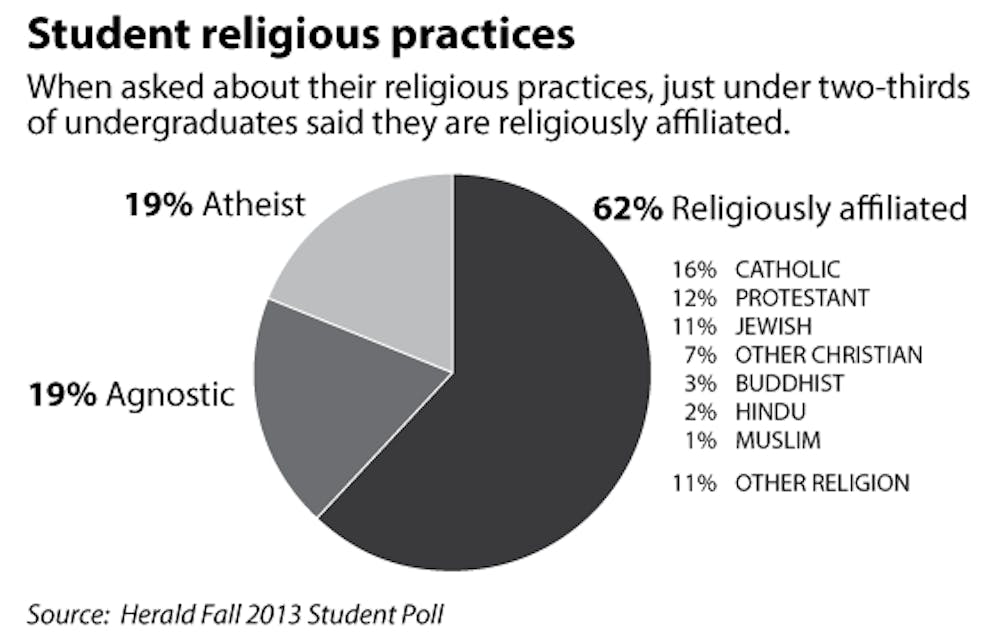In addition to asking for an address and emergency contacts, the University also asks students to indicate their religious affiliation. The Office of the Chaplains and Religious Life uses the data to ensure accommodations for all religious identities — but the survey is “horrifically outdated” and in “serious need of change,” said the Rev. Janet Cooper Nelson, chaplain of the University.
Administrators and staff from the Office of the Chaplains and Religious Life will meet to discuss changing the survey, though a specific date has yet to be set.
The voluntary survey, accessible to students through Banner, asks students to indicate their “current religion.” Students are allowed to select one religion out of a list of 33 options. Cooper Nelson said the University has been using this list since she arrived at Brown in 1990. Before the survey became available on Banner, incoming students would record their religious affiliation through a paper survey mailed to their home address, she added.
“It’s not really representative of the range of religious identities that are in the University,” Cooper Nelson said, as the survey does not allow students to select more than one religion or write-in their own identity. Younger people are also less likely to identify as a member of a particular denomination, but may still be spiritual or observe certain religious practices, and the survey should be inclusive of this trend, she said.
Cooper Nelson also added that the survey listed religious identities in a reductive and inconsistent way: the survey outlines specific traditions of Judaism but only lists Islam as “Muslim.” The current list of religious identities also fails to recognize any religious identities belonging to North American indigenous nations.
Cooper Nelson said it has taken time to adjust the survey, as the University must deal with reconciling new and old data.
After noticing how the number of submitted responses “dropped way off” since the survey’s shift to Banner, Cooper Nelson said now is an “excellent time” to make the task of updating the religious index a central objective of her office’s Departmental Diversity and Inclusion Plan. “I’m hoping we can get into religious working groups … and get some feedback from the community,” she added.
Cooper Nelson said the data would allow her office to improve student programming and ensure they could properly support religious communities on campus. Previous data from the index gave her office quantitative evidence to improve halal and kosher food offerings on campus and add more prayer rooms for Muslim students.
“If historically a faith or tradition hasn’t been a large thing on a particular campus, you might not pay attention to it,” said the Rev. Delphain Demosthenes. “If you’re not capturing that you might not make the changes that need to be made to reflect that new reality. You might not have (staff or resources) to make their time on campus suitable … just like the other students whose faith and traditions have always been represented.”
The Rev. Albert Duggan ’03 said he hopes the updated version will include a “well thought-out series of questions. It doesn’t have to be terribly long. … Ten questions or less would give us a richer sense of the spiritual landscape of the University.”
Cooper Nelson said that students’ answers would always remain confidential and that her office would never publish aggregated statistics from the data. However, she said that tracking such personal information was necessary because the “diversity of the University is a critical factor in your education.”
“That doesn’t just mean (racial) diversity or cultural diversity or socio-economic diversity. … It means all of those intersectional aspects of diversity, (including) religion,” Cooper Nelson said. “Imagine that some community that has long been in residence at Brown starts to decrease seriously — we won’t know that if we’re not paying attention to the demographics.”





